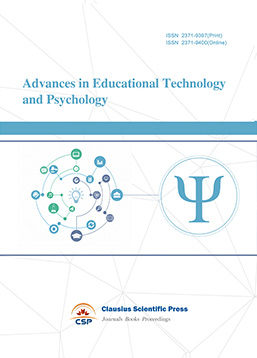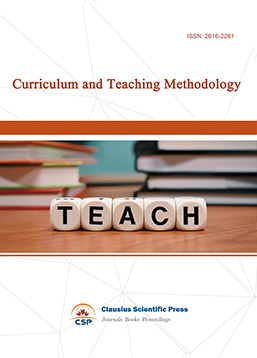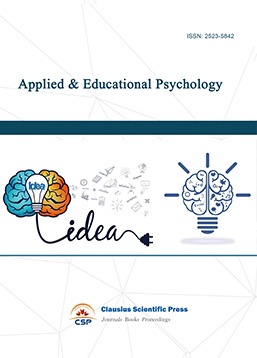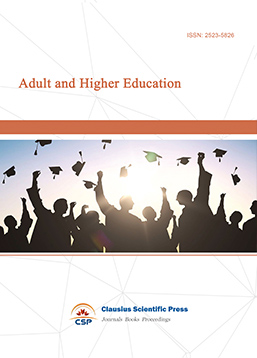Policies and Provision for Gifted and Talented Youth in Finland: Special Needs Education and Gifted Pupils
DOI: 10.23977/trance.2025.070202 | Downloads: 25 | Views: 1115
Author(s)
Yifu Hong 1
Affiliation(s)
1 College of Education, Yibin University, Yibin, Sichuan, China
Corresponding Author
Yifu HongABSTRACT
This paper delves into the policies and provisions for gifted and talented youth in Finland, with a focus on its special needs education and gifted pupils. Finland's education system, renowned for its high equality in PISA results, has a well - developed special education history. However, gifted education has long been a gap in legislation. The trend of individualism in Finnish education has brought some opportunities for gifted students, such as curriculum flexibility and acceleration options. Finnish special needs education has strengths like inclusive education and high - quality teachers. Nevertheless, it faces criticisms, including insufficient attention to gifted pupils and an over - emphasis on equality at the expense of individual excellence. In response to PISA score declines, Finland has introduced "phenomenon teaching." Whether these changes can improve educational performance remains to be seen.
KEYWORDS
Finland, Gifted Education, Special Needs EducationCITE THIS PAPER
Yifu Hong, Policies and Provision for Gifted and Talented Youth in Finland: Special Needs Education and Gifted Pupils. Transactions on Comparative Education (2025) Vol. 7: 10-17. DOI: http://dx.doi.org/10.23977/trance.2025.070202.
REFERENCES
[1] Sahlberg P. The secret to Finland’s success: Educating teachers[J]. Stanford Center for Opportunity Policy in Education, 2010, 2: 1-8.
[2] Morgan H. Review of research: The education system in Finland: A success story other countries can emulate[J]. Childhood Education, 2014, 90(6): 453-457.
[3] Tirri K, Kuusisto E. How Finland serves gifted and talented pupils[J]. Journal for the Education of the Gifted, 2013, 36(1): 84-96.
[4] Sahlberg P. Education policies for raising student learning: The Finnish approach[J]. Journal of education policy, 2007, 22(2): 147-171.
[5] Kivirauma J, Ruoho K. Excellence through special education? Lessons from the Finnish school reform[J]. International review of education, 2007, 53: 283-302.
[6] Niemi H. The societal factors contributing to education and schooling in Finland[J]. Miracle of education: The principles and practices of teaching and learning in Finnish schools, 2012: 19-38.
[7] Rinne R. The globalisation of education: Finnish education on the doorstep of the new EU millennium[J]. Educational review, 2000, 52(2): 131-142.
[8] Mönks F J, Pflüger R, Radboud Universiteit Nijmegen. Gifted education in 21 European countries: Inventory and perspective[M]. Nijmegen: Radboud University Nijmegen, 2005.
[9] Sassi M J, Moberg S J. Special education in Finland[J]. International Journal of Disability, Development and Education, 1990, 37(2): 91-98.
[10] Jahnukainen M. Different strategies, different outcomes? The history and trends of the inclusive and special education in Alberta (Canada) and in Finland[J]. Scandinavian Journal of Educational Research, 2011, 55(5): 489-502.
[11] Kivinen O, Kivirauma J. Special education as a part of the school system and as a classification system: the case of Finland in the twentieth century[J]. Scandinavian Journal of Educational Research, 1989, 33(1): 67-78.
[12] Vitikka E, Krokfors L, Hurmerinta E. The Finnish national core curriculum: Structure and development[M]//Miracle of education: The principles and practices of teaching and learning in Finnish schools. Rotterdam: SensePublishers, 2012: 83-96.
[13] McGinn, Noel F., and Thomas Welsh. Decentralization of Education: Why, When, What, and How? Fundamentals of Educational Planning 64, UNESCO International Institute for Educational Planning, 1999.
[14] Finnland O. National core curriculum for basic education 2004: national core curriculum for basic education intended for pupils in compulsory education[M]. Finnish National Board for Education, 2004.
[15] Boettger E R H, Reid E. Gifted education in various countries of Europe[J]. Slavonic pedagogical studies journal, 2015, 4(2): 158-171.
[16] Johnsen S K. Finland and gifted education comparisons[J]. Gifted Child Today, 2015, 38(3): 137-137.
[17] Tirri K. Teacher values underlying professional ethics[J]. International research handbook on values education and student wellbeing, 2010: 153-161.
[18] Committee on Minority Representation in Special Education. Minority students in special and gifted education[M]. National Academies Press, 2002.
[19] Pope D C. " Doing school": How we are creating a generation of stressed out, materialistic, and miseducated students[M]. Yale University Press, 2001.
[20] Organisation for Economic Co-operation and Development (OECD). (2016). PISA 2015 results in focus.
| Downloads: | 14673 |
|---|---|
| Visits: | 581729 |

 Download as PDF
Download as PDF



